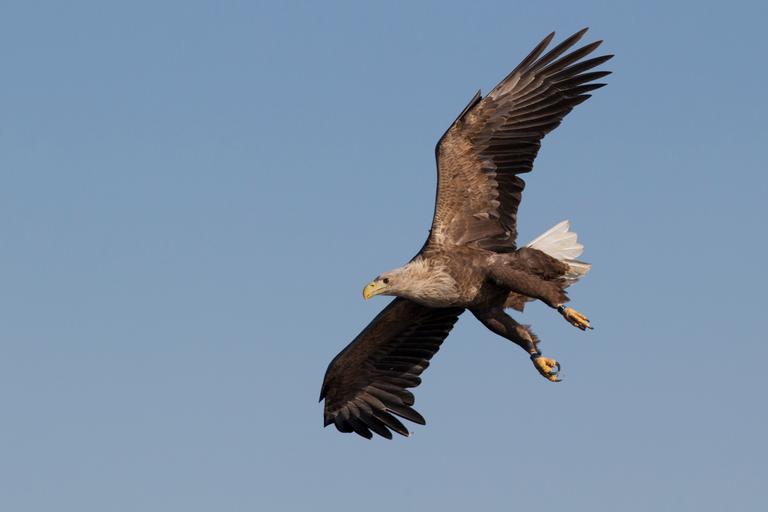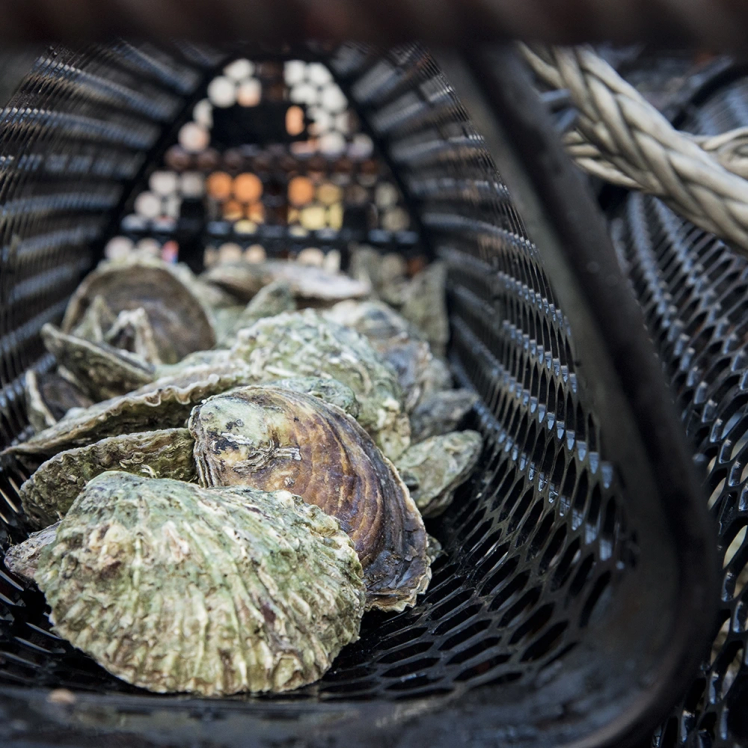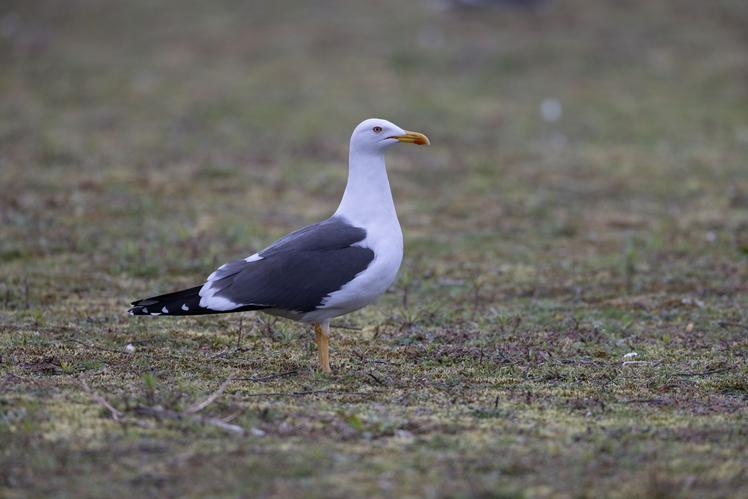Positive impact of new onshore assets from 2025
Biodiversity is the term used to describe the variety of life on earth. Such diversity is vital to ensure resilient nature and a liveable planet. Unfortunately, biodiversity is under great pressure worldwide. Since 1970, the population sizes of fish, birds, mammals, amphibians and reptiles worldwide have declined by an average of 73%, according to the Living Planet Report 2024.
Our One Planet target for biodiversity: new onshore assets will have a positive impact from 2025 onwards
To prevent our impact from negatively affecting biodiversity, Eneco wants to be a forerunner in the energy sector. Eneco therefore has a One Planet goal that, from 2025 onwards, all its investment decisions for new onshore renewable energy sources will have a net positive impact on biodiversity. This means that Eneco is committed to restoring biodiversity to at least 110% compared to the state at the start of the project. We achieve this by minimising negative impacts on biodiversity when developing and implementing new projects and by investing in nature restoration and development. We will ensure that valuable, more species-rich nature develops compared to what is present now. Eneco considers the local impact on biodiversity when building, implementing and decommissioning projects. Biodiversity in the chain and upon decommissioning a project fall under the One Planet domain of circularity.Method
Consultancy and engineering firm Arcadis has made the Biodiversity Metric applicable to renewable energy projects for Eneco. The Biodiversity Metric is a method developed by Defra, the UK's Department for Environment, Food and Rural Affairs. The method allows us to identify, for our solar, wind and heat projects to be developed, the nature restoration measures needed to achieve a net positive result for biodiversity. This approach is in addition to the requirements from the necessary permits. Eneco will initially focus on preventing damage to nature. Should this be (partly) unavoidable, the extent to which this damage can be mitigated or nature restoration will be examined. The basic premise is that biodiversity must ultimately be at least 110% of the biodiversity on the site prior to the development. The Biodiversity Metric is not currently applicable to marine habitats. Arcadis has carried out research into the possibilities for this at the request of Eneco; the results will be discussed with Defra, experts and NGOs. We consider the establishment of biodiversity criteria in tender conditions to be essential prerequisites for achieving a positive impact on biodiversity, also in bidding projects. Eneco will endeavour to ensure that these biodiversity criteria are set out in tenders.
The method has four steps:
- Step 1 is an assessment of existing habitats before the development of a renewable energy project.
- Step 2 is an assessment of the expected impact on existing and new habitats after development of the renewable energy project.
- Step 3 calculates the difference between the results of steps 1 and 2.
- Step 4 determines the nature restoration measures needed to become net positive after development of the renewable energy project. With these measures, step 2 is redone until the minimum target of 110% is reached in step 3. For each project, a nature restoration plan is drawn up in advance in cooperation with the local community, looking at how this renewable resource can fit into the landscape as well as possible and how we can enhance nature and biodiversity (preferably locally).
Biodiversity Code of Conduct
In collaboration with an NGO, the Code of Conduct on Biodiversity (PDF) was developed. The Biodiversity Code of Conduct describes, among other things, methodology, its limitations, scope, mitigation hierarchy and conservation hierarchy, site selection and monitoring.
Monitoring
After construction, a management plan goes into effect, describing how nature management should be carried out in the following years to achieve the nature goals. In addition, monitoring takes place to assess whether the intended nature restoration is actually taking place. Based on a monitoring framework (PDF), a monitoring plan is drawn up for each renewable energy project. The purpose of this monitoring plan is to agree in advance on the indicators to be measured, measurement methods and location, timing and frequency, and division of roles. If the monitoring results show that we are not going to meet our targets, it gives us the opportunity to evaluate the actions implemented and make timely management adjustments with the aim of still achieving the desired result.
Stakeholders
Methods to monitor the biodiversity impacts of companies are multifaceted and still evolving. We are proud of the partnership with Arcadis and the involvement of NGOs in the development of the method and code of conduct. In the future, we will continue to involve NGOs in our progress in monitoring and possible broadening of the application of the method for offshore assets.

Other nature measures
Eneco is actively involved in drafting an Ecocertified Solar Parks certificate. Eneco's roles include chairing the Ecology Working Group at Holland Solar. In addition, measures to improve biodiversity have been implemented in several projects, with habitat restoration being a priority (GRI 304-3). Examples include the oyster measures at the offshore wind farms Borssele III and IV and Luchterduinen, the breeding island for common terns at the Delfzijl Noord wind farm and the creation of thicket and woodland at the Bosruitertocht wind farm in Zeewolde. By creating suitable habitats, many species can find new areas to live, giving their populations a boost locally. In the case of the oyster measures, the creation of new oyster beds of flat oysters in the North Sea is even going a step further. Flat oysters are what is known as system builders. These are animal species that are essential for habitat formation and, in some cases, actually form the habitat. Although the oyster beds consist of oysters, the structure of the oyster beds itself provides habitat for juvenile fish and numerous invertebrates. A fourth example is Ecowende: the joint venture between Eneco and Shell that has won the tender for the Hollandse Kust (west) offshore wind farm. A special feature of this wind farm is the role of ecological research and the application of various measures to reduce possible negative impacts of a wind farm in the North Sea and in fact actually encourage nature enhancement.Significant effects
Significant impacts on protected natural values should be excluded as far as possible (GRI 304-2). As a definition for significant effects, we use the wording used within European laws and regulations for the protection of Natura 2000 values. Significant impacts occur if the plan or project makes it difficult to achieve the conservation objectives. These objectives are set out in the designation decisions for the Natura 2000 sites. In addition, a decrease of 1% or more in a population of a species is also considered a significant effect.
No significant negative effects are expected at habitat level within the current operational assets, as all Eneco's assets are built outside Natura 2000 areas with protected habitats. A risk of a significant impact at species level existed at the Maasvlakte ll wind farm for the lesser black-backed gull, herring gull and common tern. These three species breed on the Maasvlakte and fly out to sea through the wind farm to forage and back again, running the risk of being injured or killed by the wind farm. Therefore, to eliminate this risk of a significant impact on these species, a start-stop mechanism is in operation, linked to a radar system that can detect the bird species concerned. This has led to the temporary shutdown of the wind turbines during the breeding season, when the greatest impact can be expected. The wind turbines were brought to a standstill at times of high bird movement, especially in the early morning and at the end of the day. Preliminary research has shown that these are the hours when most bird movements can be expected. Currently, flight movements are still being studied. The results of this study will be further fine-tuned using new research (fitting tracking devices to breeding birds at the Maasvlakte) and will serve as a model project for future developments.

Red list species
The IUCN Red List of Threatened Species is the most comprehensive and widely used source of information on the status of animal and plant species. By showing which species are most at risk of extinction, the Red List is an important starting point for nature conservation and nature policy (GRI 304-4). In European member states, Red Lists have been translated to the national level, often adding additional species if these species are under pressure in the country concerned. The categories of the national red lists are the same as those of the IUCN.The Red List of threatened birds includes two species in the "vulnerable" category that we are dealing with: the white-tailed eagle and the common tern. Recently, a white-tailed eagle flew into a wind turbine at Zeewolde wind farm, a large wind farm operated by multiple parties. Eneco has four wind turbines here. All the parties have moved ahead with the joint purchase of a camera detection system (BioDiv), which can detect white-tailed eagles and immediately shut down wind turbines in the white-tailed eagle's flight path. Common terns have an increased risk of collisions at the Maasvlakte and at Delfszijl. For this species, a customised temporary shutdown is applied in Maasvlakte ll wind farm during the breeding season, and a special breeding island has been created at Delfszijl that the common terns take full advantage of.